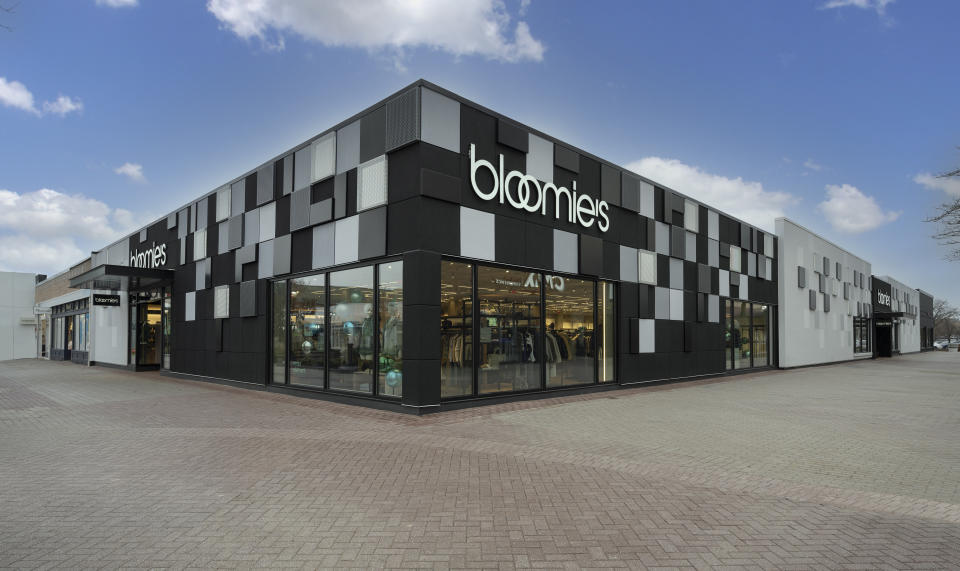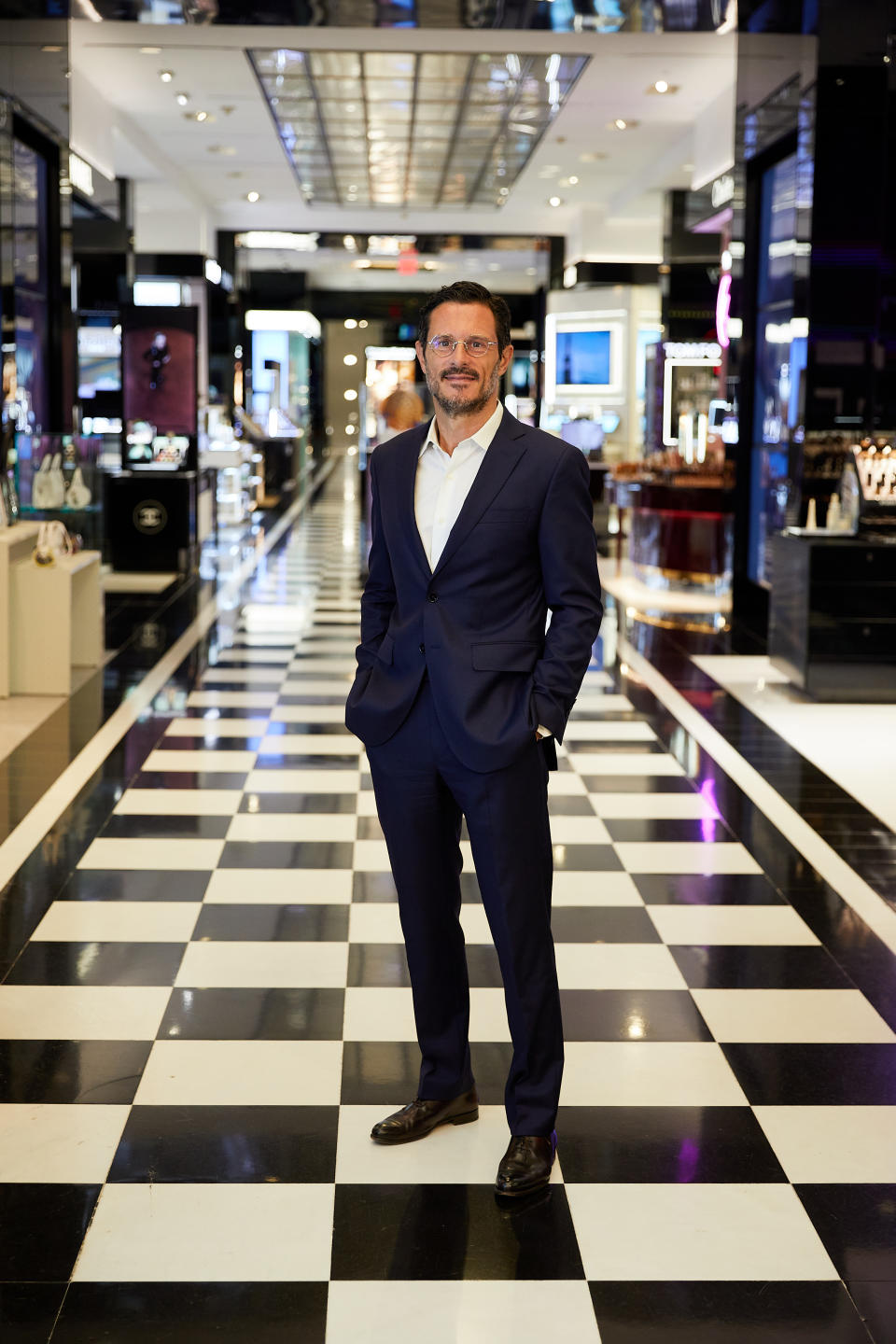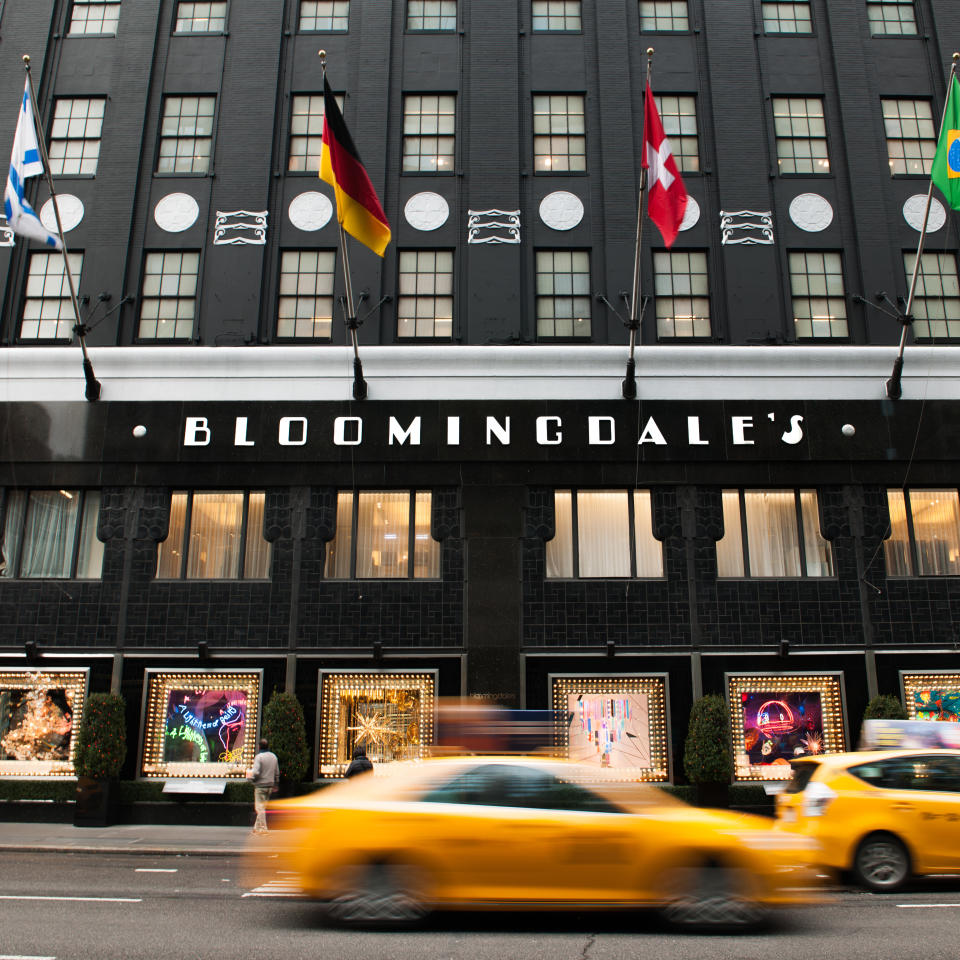EXCLUSIVE: In His First Interview as Bloomingdale’s CEO, Olivier Bron Shares His Vision for Change

Bloomingdale’s is in good shape, has grown since pre-COVID-19, and there’s a vigor to its selling floors that competitors lack, yet Olivier Bron sees plenty of room for improvement.
“The next chapter will be different from the past. We want to be bold and big,” said Bron, Bloomingdale’s chief executive officer. “I’m absolutely convinced that we have a fantastic platform to build the next chapter right now, because this company has been very well managed and because the foundations are very strong.”
More from WWD
But there are concerns.
“I do believe that in the U.S., the players here are much stronger in terms of buying, managing the assortment, and in digital. The biggest penetration in digital is in the U.S. where it’s very strong and also in China and the U.K.” Overseas, however, “retailers invest in stores differently,” providing different experiences, Bron said, citing gamification, social shopping and big beauty presentations with visual impact and the best products as examples in Europe and in Asia, where families enjoy visiting department stores, he said.
“Instead of benchmarking only the domestic market, let’s open our eyes on what’s happening in the world, knowing that the best department stores are not in the U.S. right now,” Bron said. “We have a lot to learn from what’s happening outside. We have to balance the best of both worlds to bring the best to our customers.”
What I’m bringing to Bloomingdale’s is a different point of view.”
Olivier Bron
The promotion of Tony Spring, the former Bloomingdale’s CEO, to chairman and CEO of Macy’s Inc., the parent company of Macy’s, Bloomingdale’s and Bluemercury, triggered an intense search for a successor. Many candidates were considered, speculation ran rampant and the 46-year-old Bron, a relative unknown in the U.S., was picked based on his 20 years of experience in retail leadership roles, his knowledge of the luxury market and what Macy’s Inc. detected was an appreciation of the Bloomingdale’s culture. He’s been running Bloomingdale’s, a plum job in retailing, since November.
Bron was CEO of Central Group’s Central and Robinson Department Stores in Thailand since November 2021, where he’s credited with devising and executing a strategy for sustainable growth. When the company celebrated its 75th birthday, he unveiled a five-year, $450 million campaign involving store openings and renovations across Thailand; creating integrated online and offline shopping experiences, and elevating products, services, the app, personalization, CRM programs and social media.
Before Central, Bron was chief operating officer and director of strategy for French retail group Galeries Lafayette in Paris, where he worked for seven years and played a pivotal role in driving operational efficiency and strategic planning and ramping up growth with store openings in and outside France, specifically China and the Middle East.
Prior to Galeries, he spent 12 years at the global consulting firm Bain & Company, transforming retailers, including a major French food retailer where everything from the strategy to the assortment, store footprint, marketing and pricing was overhauled.
“What I’m bringing to Bloomingdale’s is a different point of view,” Bron told WWD.
The Game Plan
In his first interview since joining Bloomingdale’s, Bron spelled out specific strategies and ideas for taking the upscale department store to the next level, emphasizing increased localization of events, merchandising and marketing; generating greater cross-category shopping; leveraging data more intensively, and building up the accessories business while maintaining ready-to-wear as the core.
He stressed improved “storytelling” and experiences to elevate the essence and breadth of the most important brands being sold. And to further that objective, Bron said the designer floors — four and five — at the 59th Street flagship in Manhattan will be renovated. Increasingly, designers have shifted to leased shops, as opposed to wholesale. Asked whether more of the selling floor will be populated by leased shops, Bron replied, “Our purpose is to bring the best of the brands to our customer. So it could be leased or not leased. Storytelling can work either way. It depends on the maturity of the brand and on the strategy of the brand. We’re very flexible on the model.
“We’re clearly a destination when it comes to ready-to-wear,” Bron said. “It’s performing strongly over the past few months. That’s really our home base,” though he added, “We’re developing and reinforcing our accessories meaning handbags, shoes, etc. It’s definitely where we keep investing and developing in terms of bringing new brands in, elevating the brand mix, giving it a bit more space to bring the best of these categories to our customers.”
The renovations of the fourth and fifth floors, “will illustrate this focus we’re having in our home base of ready-to-wear and developing the other categories.”
In the ’70s and ’80s, under the leadership of the late CEO Marvin Traub, Bloomingdale’s led the industry in staging large scale, large volume import promotions each fall, centering on France, Italy, China, India, among other countries and regions around the world. They brought excitement and merchandising innovation across a spectrum of categories, including many products never before sold in the U.S. Asked if Bloomingdale’s could revive the format after a 30-year absence — and there’s been some market speculation to that effect — Bron stated, “We need to have some big campaigns happening regularly” but nothing was said on import promotions specifically.
Staying Focused
While his career journey has taken him to three continents, and he knows the European and Asian markets well, taking Bloomingdale’s international beyond its two existing Middle East sites is not being pursued. There are two full-line Bloomingdale’s stores overseas, in Dubai, United Arab Emirates and Al Zahra, Kuwait, and e-commerce in the Middle East, all of which is licensed to the Al Tayer Group.
“We have to stay focused. We have a lot of potential still in the U.S.,” Bron said. “It’s very important that we don’t spread our resources and energies on too many priorities. There are very limited synergies by building an international business, because you have to buy locally, you have to do your marketing locally, you have to do everything locally. There’s no white space internationally, from a department store standpoint, and I looked at that pretty extensively. Most of the markets are already very mature. For us, it would mean massive investments, whether it’s in capex [capital expenditures] or in marketing, and questionable returns. The only way would be to franchise. But again, right now, it’s not a strategic priority.”

Bloomie’s, the fledgling downsized version of the full-line Bloomingdale’s offering a curated assortment weighted toward contemporary and luxury brands, remains in “test and learn mode,” Bron said. “It’s a bit too soon to define the full potential.”
Spring earlier this year said a total of 15 new Bloomie’s and Bloomingdale’s the Outlet locations would open through fiscal 2026, though he did not specify how many of the 15 would be Bloomie’s or Bloomingdale’s outlets. There are 21 Bloomingdale’s outlets, and three Bloomie’s operating; a fourth will open in Shrewsbury, N.J., this fall.
“We have more potential with the outlets but they can not outgrow the full-line markets,” Bron said. “Bloomingdale’s is not an outlet first. We are a premium full-line store. We just need to be very careful, because the most important asset we have in the company is our brand. Our brand has existed for 150 years. We have to protect the brand, whatever we’re doing.”
Reputation Versus Footprint
There are no plans to open additional full-line Bloomingdale’s department stores, Bron said, though new markets are always considered. Texas, Arizona and the Pacific Northwest, where Bloomingdale’s does not operate any department stores, would be top of mind if the outlook for launching additional full-line department stores changed.
“It’s a limited footprint, when you look at the size of the U.S. where we only have 33 full-line stores. The strength and the power of the brand is going way beyond the footprint. In Thailand, everybody knows about Bloomingdale’s.
“We keep investing in Bloomingdale’s stores, which is very important and not only in New York. We’ve been investing in Aventura, South Coast Plaza, Century City and in Tysons Corner. We keep investing in our network of stores because we think that it’s very important, again, for the customer experience and for our brand partners.
“The [U.S.] market is already pretty mature. But we’re always carefully looking to see if there are some opportunities. For the moment, we don’t have any [new stores] cooking. There are some attractive locations and regions that we’re not in,” but these are pretty well cover by strong players already, Bron indicated.
“We need to be very careful about not spreading our resources on too many bets right now. And one of our key challenges is really focusing on a limited set of priorities, among them developing the local leadership in our current locations. It’s about events. It’s about selection of assortment and products. It’s about local service as well as staff, and even social media. It’s about leveraging the power of data. We don’t leverage that enough. It can help us become more localized, more customized, more personalized in terms of the relationship with the customer.”
Last fall, Bloomingdale’s introduced an online marketplace. “We need to be very careful when we talk about marketplace,” Bron said. “The marketplace is a tool. Marketplace is not an objective by itself. It’s just a way to propose new brands, new assortment to our customers. So this is just the tool. The purpose of Bloomingdale’s is not to be the Amazon of fashion, beauty and home. Right? We don’t want to have the largest assortment or the biggest assortment in the U.S. on these three categories. We want to bring the best assortment to our customers. So marketplace is just a way to bring some of the brands that don’t have the capability, or the will, to come on our existing platform. It can also be a way to get a long tail of products in some categories and brands we want to propose to our customers. It’s a way to test new markets.” It also enables the retailer to list products beyond what the budget to purchase products wholesale would provide for.
Financial Performance
Bloomingdale’s volume, he said, has grown significantly over the past five years. It’s currently in the range of $3.5 billion to $4 billion, whereas a few years ago it hovered around $3 billion. In the first quarter of 2024, Bloomingdale’s saw a 0.3 percent comparable sales gain. In the fourth quarter of 2023, comparable sales were down 1.6 percent. “We have a very healthy financial structure right now, which we know is not the case for all of the competition.…If you look at the last few months, we keep growing,” Bron added.
We have to do our job better than what we’re used to. Brands go direct to customers because they don’t see value in partnerships with department stores today. We have to bring back this value…”
Olivier Bron
Digital sales, he said, account for more than 30 percent of the total business. Does he see it going much higher? “We don’t have an objective in terms of percentage,” he said.
“We don’t want to be the number-one department store in the U.S. This is not our purpose. What I would like to be is the local leader.…We want to be the omnichannel, local leader.”
“We keep growing our customer base, which is very strong today. But where can we do better? Getting more out of our existing customer, selling across categories. It’s a strong opportunity.”
Since joining Bloomingdale’s in November 2023, the CEO said most of his time on the job has involved listening and learning, and developing a new vision for the company. He’s visited 25 to 30 “important” designer and brand showrooms, and most of the Bloomingdale’s department stores. He was very surprised to see a “fantastic brand mix, a great curation on the product,” though he wasn’t overly impressed by how brands in many cases were presented in the stores.
“Sometimes you have a great assortment put on a single rack at the back of the store, in a dark or very generic environment. It’s not [projecting] the true value of the brands and true value of the experience to the customer. Why are you paying $3,000, $4,000, $5,000 for this handbag? It’s because you’re buying a brand. You’re buying a story. You’re buying a legacy. You’re buying a social marker. You’re buying something special. We have to bring that back to the customer, by bringing the full experience of the brand.” That calls for more customized environments, stronger events and reinvesting in customer service, he said.
“We should not only focus on transaction. We have to focus a lot more on the storytelling — the DNA — of our brand partners.
“I’m coming into this job very humble. That’s important, because I didn’t know much about the U.S. market,” Bron said. “It’s probably the most intense and competitive market in the world, when it comes to department stores. You have sometimes three, four or five department stores, big department stores, in every location. It’s a fierce market.

“The department store is one of the most complex models in retail from an analytical standpoint. I love that it’s a hard business. We have lot of skus, a lot of categories, a lot of customer segments. I’m loving this complexity. A reinvented model of department store has a bright future.
“If we play it correctly, our role of curator, innovator, bringing the best selection of products, celebrating the brands and bringing the best of these brands to the customer, then the department store is a fantastic experience. It’s super enjoyable at Selfridges in London or when you go to Galeries Lafayette or Bon Marché. People love it. Department stores can have a bright future, even in the U.S.
“We have to do our job better than what we’re used to. Brands go direct to customers because they don’t see value in partnerships with department stores today. We have to bring back this value, not only for our own customer, but also for the vendors. This is why the department store model has been eroding year after year. It has to be convenient and easy. It has to be inspiring and exciting. And it has to be personal and emotionally connected.”

Bron on Bron
Between working at Bain, Central Group and Galeries Lafayette, “I’m pretty balanced between operations and strategy. I’m pretty balanced between the three main dimensions of our business, stores, digital and marketing,” Bron said. “What Bain helped me to do is actually bringing methodology and structure to the way we’re addressing business opportunities. That’s very important. This is what I loved about my years at Bain, and it’s helping me today, in the way I’m considering the business and structuring the priorities.
“If you want to be good at retail, you need to like people. I like people,” Bron said. “I like to serve and please the customer. I like working with my teams.
“I’m definitely not hands on,” Bron added, underscoring that he is a believer in local empowerment and a bottom-up culture. “The business has become so complex, when you look at data, digital, the customer experience, investments. Thinking that I can control all these dimensions better than my teams would be totally crazy. I want them to actually bring their expertise and their ideas to me, for us to progress . . . . I’m defining the vision. I’m making sure that we have the right organization, and then they have to do their work.
“The second thing I love is the product we’re selling. We’re selling fantastic products, fantastic brands. I’m so impressed by the work that most of the brands do developing products, their creativity, craftsmanship and their marketing.”
Bron reports to Spring, who spent his entire retail career at Bloomingdale’s until stepping up as CEO of Macy’s Inc. “It’s hard for him to let go of Bloomingdale’s,” Bron observed. “I have a very close relationship with Tony. The first advice he gave me was to start the job by listening and learning. It was very savvy and accurate advice, because I learned so much from our partners, from our teams, from many, many people in the market about Bloomingdale’s.
“He’s been extremely supportive on any new ideas,” Bron said. “We speak every week. He’s not controlling anything. He’s really a partner for me, and a very savvy partner on Bloomingdale’s. We’re two different individuals, totally. I’m more extroverted. He’s more introverted. He’s probably more hands on, and I’m more hands off, but I think we’re very, very complimentary.”
Best of WWD

 Yahoo Finance
Yahoo Finance 